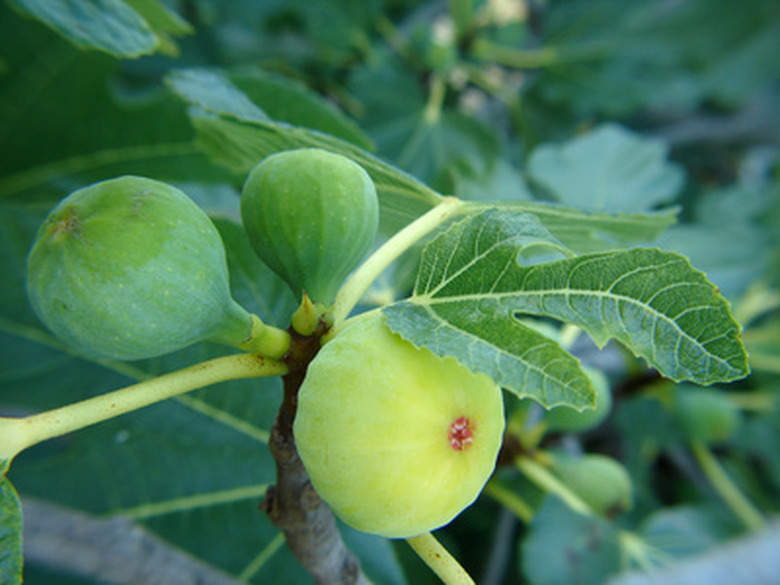Growing Fig Trees In Arizona
Things Needed
- Shovel
- Compost
- Mulch
- Liquid plant starter
When most people think of figs, they think of either dried figs or fig bars that come from the grocery store. Few people know the delight of biting into a plump and sticky fig dripping with sugary goodness. A fresh fig is one of the greatest treats that can come out of the garden. Arizona, with its mild, dry climate and rocky soil is perfectly suited to growing fig trees. Unlike many fruit trees, they are easy to plant and care for. Gardeners in the hotter southern regions of Arizona can plant figs anytime in the fall until about mid-November, while northeastern gardeners in USDA Zones 5 to 7 should plant anytime in the spring.
Step 1
Choose a sunny, well-drained site. If you are in northeast Arizona in USDA Zones 5 or 6, choose a sheltered site. Next to a sunny wall is ideal. Plan on your fig tree needing 12 feet of space in all directions when it matures.
- When most people think of figs, they think of either dried figs or fig bars that come from the grocery store.
Step 2
Dig a hole as deep as the root ball and 1 1/2 times as wide.
Step 3
Amend the excavated soil with 1/3 compost if it is compact or poor-draining. Fig trees are native to the Mediterranean and like poor, rocky, well-drained soils. While not picky about pH, figs in the alkaline soils of central and southwestern Arizona would benefit from the same compost amendment to neutralize pH.
Step 4
Remove the tree from its container and place in the center of the hole. If the tree is balled and burlapped, cut the twine away from the base of the trunk to prevent girdling as the tree grows.
Step 5
Fill the hole with the excavated soil to the top of the root ball.
- Dig a hole as deep as the root ball and 1 1/2 times as wide.
- While not picky about pH, figs in the alkaline soils of central and southwestern Arizona would benefit from the same compost amendment to neutralize pH.
- Remove the tree from its container and place in the center of the hole.
Step 6
Water thoroughly until the planting hole is full. When the water settles, add more soil if settlement has occurred. Water again, mixing in a vitamin-rich plant starter according to product directions to encourage strong root growth.
Step 7
Mulch the planting area with two inches of mulch, pulling the mulch 2 inches away from the trunk to prevent excessive moisture, which can rot bark.
Step 8
Water the plant throughout the first year when the top of the root ball gets dry. Avoid getting water on the leaves, which can encourage disease.
Step 9
Renew the mulch as it disintegrates to conserve moisture and neutralize alkaline soils.
- Water thoroughly until the planting hole is full.
- Mulch the planting area with two inches of mulch, pulling the mulch 2 inches away from the trunk to prevent excessive moisture, which can rot bark.
Tip
If you are in northeastern Arizona, your fig tree will be more of a shrub than a small tree. Some or all of your fig tree may die back in a hard winter. Simply prune away damaged branches and wait for new shoots to come up from the ground. In hot regions, control growth by trimming branches back in late winter. This encourages better fruit production. Don't expect your fig tree to bear fruit the first year. They usually take about 3 years to mature. The "Brown Turkey" and "Black Mission" fig cultivars both do well in Arizona. In northern Arizona, "Brown Turkey" is the favorite for hardiness and fruit production.
Warning
Fertilize fig trees only when they show nutrient deficiency. Use a fertilizer specially formulated for fruit trees that is low in nitrogen, which encourages leafy growth at the expense of fruit.
References
- "The Southern Living Garden Book", Steve Bender, 2004
